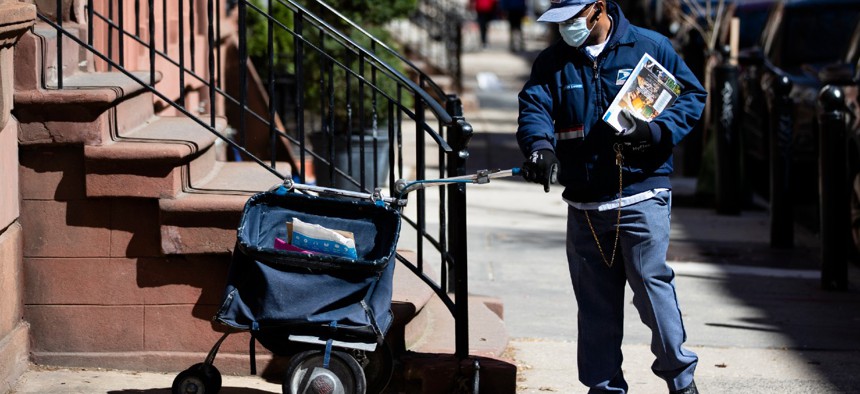
Matt Rourke / AP
USPS Defends Slower Mail Proposal Before Its Regulator
Regulatory commission will have final say on Postmaster General Louis DeJoy's biggest reform.
U.S. Postal Service officials in recent days defended the agency's plan to slow down delivery for some mail to members of the public, suggesting the reform would achieve significant savings and allow its customers to follow a more predictable schedule.
The question-and-response session came as part of the Postal Regulatory Commission’s review of the mail delivery window changes, issued under Postmaster General Louis DeJoy’s 10-year plan to eliminate USPS losses. Postal officials defended the models they used in making assumptions related to their plans, though they repeatedly stated they did not evaluate the impact on particular groups or reach out to customers at all.
Asked by various members of the public, private sector stakeholders and PRC staff, postal managers said they had not examined the impact of the proposed changes on rural versus urban populations, low income communities or elderly communities. They said the agency did not solicit feedback on the changes from its customers, though an official added USPS regularly surveys its customers on general matters and therefore understands their needs.
Under federal statute, USPS must receive an advisory opinion from PRC when it seeks to implement reforms that would affect service on a nationwide basis. The commission has 90 days to issue its ruling, in this case by July 20. PRC will hold formal hearings in June.
The Postal Service highlighted during Friday’s conference that 61% of First-Class Mail will not experience any service change and 70% of mail will remain in a one-to-two day window. As DeJoy previously suggested, officials said USPS can no longer meet the standards it had set and the new windows would more accurately reflect what is already occurring.
“This is not about slowing the mail down,” said Robert Cintron, USPS’ vice president for logistics. “This is, again, about providing consistent, reliable, predictable service.”
Cintron was questioned on why the Postal Service expects to see cost savings when its inspector general and PRC both previously found the previous efforts to slow mail delivery realized only a small fraction of anticipated savings. He declined to speak to what occurred in those efforts during the early 2010s, but expressed confidence the focus on reducing the agency’s reliance on contracted air transportation in favor of more surface trucking would lead to a different outcome.
USPS “absolutely will realize cost savings,” Cintron said.
Surface transportation is both cheaper and more reliable than sending mail through the air, officials stressed, saying the change would save about $175 million annually. They added that USPS' trucks, often contracted, are underutilized and therefore could easily absorb the volume typically sent on planes.
Cintron vowed that USPS would deliver 95% of mail within its new delivery windows, a target it has not met in eight years. The service standard changes, coupled with other reforms DeJoy is implementing, would “augment our ability to then provide that service,” Cintron said. He added postal management’s “full expectation” is that it would meet the 95% standard.
PRC officials at the conference did not tip their hand on which way they were leaning on the changes, but did raise questions about postal management’s modeling and outreach efforts.
In addition to the service standard changes, DeJoy plans to reduce hours at some post offices, consolidate some of its processing plants, raise rates under new authorities PRC awarded it last year, make investments in its outdated infrastructure and generally shift resources away from mail and toward package business. While detractors have speculated that raising rates and slowing service will drive customers out of the postal system and further exacerbate its declining volume, postal officials said on Friday they had not analyzed the dual impact of that approach.







